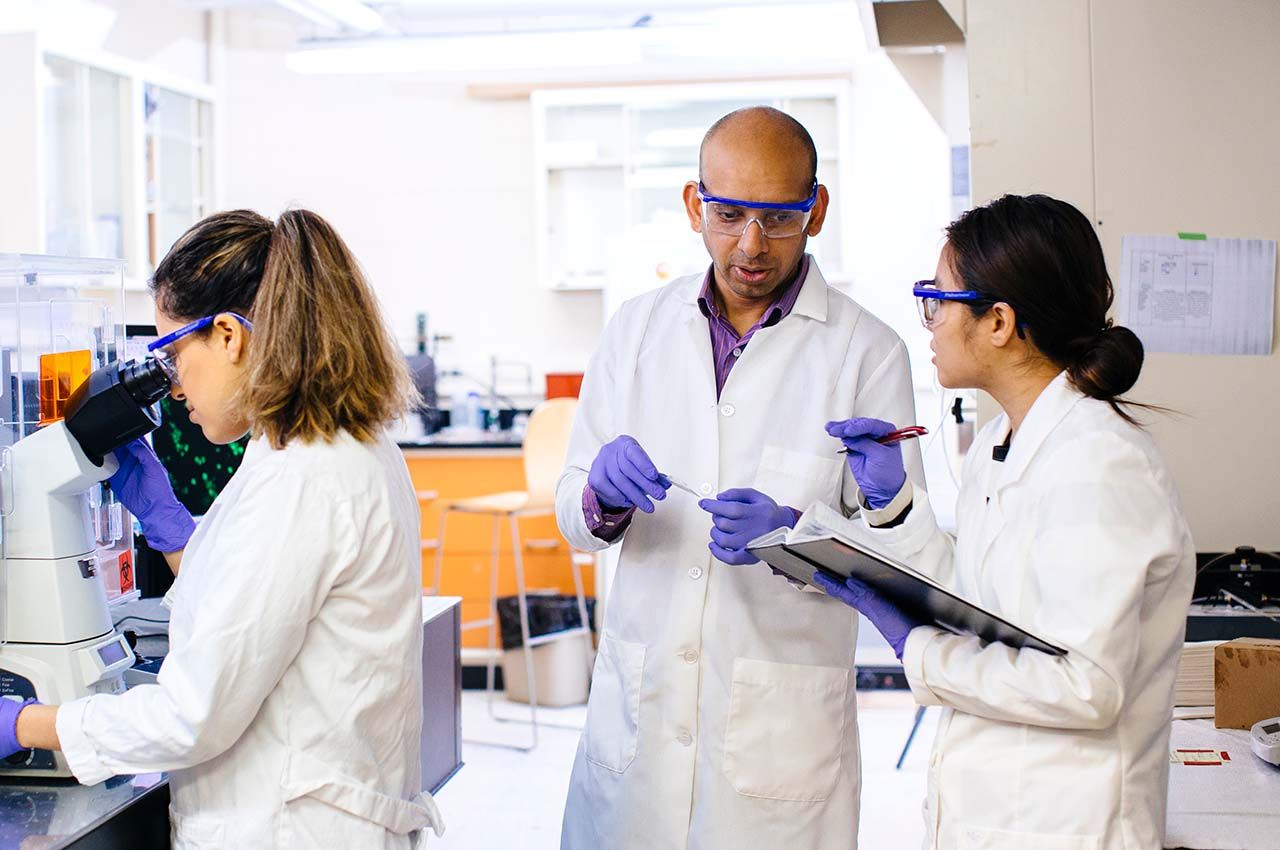Chip-Sized Device a Mighty Tool for Finding Colon Cancer Treatment

Illinois Institute of Technology Assistant Professor of Biomedical Engineering Abhinav Bhushan is making new use of his groundbreaking microfluidic device that mimics the colon environment by using it to test the effectiveness of bacteria that have been engineered to detect and kill colon cancer.
The research team, led by Assistant Professor at University of California, San Diego Amir Zarrinpar, received funding from the National Institutes of Health.
“Even though our ability to diagnose colorectal cancer is improving, it’s really hard to treat,” says Bhushan.
As a result, colorectal cancer is the fourth highest cause of cancer-related deaths in the United States, according to the Centers of Disease Control and Prevention (CDC).
The colon environment presents unique challenges for laboratory testing because it is made up of two types of cells in close proximity with very different needs: The cells that make up the colon walls require oxygen to survive, while bacteria that live in the colon can’t survive in the presence of oxygen.
As such, a laboratory test that captures the full complexity of this environment requires more than just a petri dish.
Bhushan’s innovative microfluidic device, developed with funding he received as part of the Nayar Prize II competition and from the Alternatives Research and Development Foundation, is the first device of its kind to provide this ability.
As published in September 2022 in Cellular and Molecular Bioengineering, the device has successfully been used for projects such as testing how drugs get absorbed in the colon. This project will be the first-ever use of this type of device to simulate a cancerous colon environment.
It’s a tricky process.
“The bacterial multiplication cycle is much faster than that of mammalian cells, so the system is very dynamic, and it’s leading toward what we call chaos,” says Bhushan. “Part of the challenge in using this type of device is figuring out how to extract the maximum life out of it and make sure we get a meaningful outcome in that time period.”
Zarrinpar will provide a range of engineered bacteria that Bhushan will then put through a battery of tests.
The bacteria will use different mechanisms to identify and kill the cancer cells, and Bhushan’s task will be to determine which are most effective and efficient. He will also check if the bacteria produce other effects on the colon cells such as inflammation.
“The microfluidic devices are essential to figuring this out,” says Bhushan.
The ability provided by the microfluidic technology to conduct in vitro tests gives the team the best chance for success in determining a highly effective bacteria that will then undergo a preclinical trial.
Bhushan says the results of this project will have broader impacts on finding treatments for other diseases.
“I think there are other environments where this type of study can be very, very useful, so I’m very excited about that,” he says.
Photo: Assistant Professor of Biomedical Engineering Abhinav Bhushan works with students in the lab


![[From left to right] Associate Professor of Biomedical Engineering Kenneth Tichauer and Professor of Electrical and Computer Engineering Jovan Brankov](/sites/default/files/styles/width_350/public/2024-11/tichauer-brankov_1280x850.jpg?itok=hxdjBhlU)

